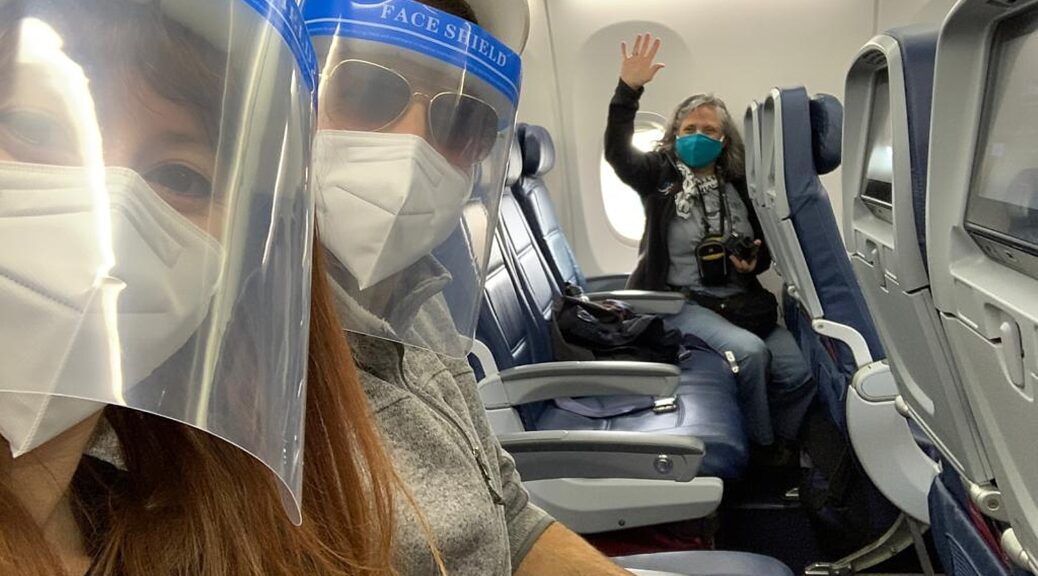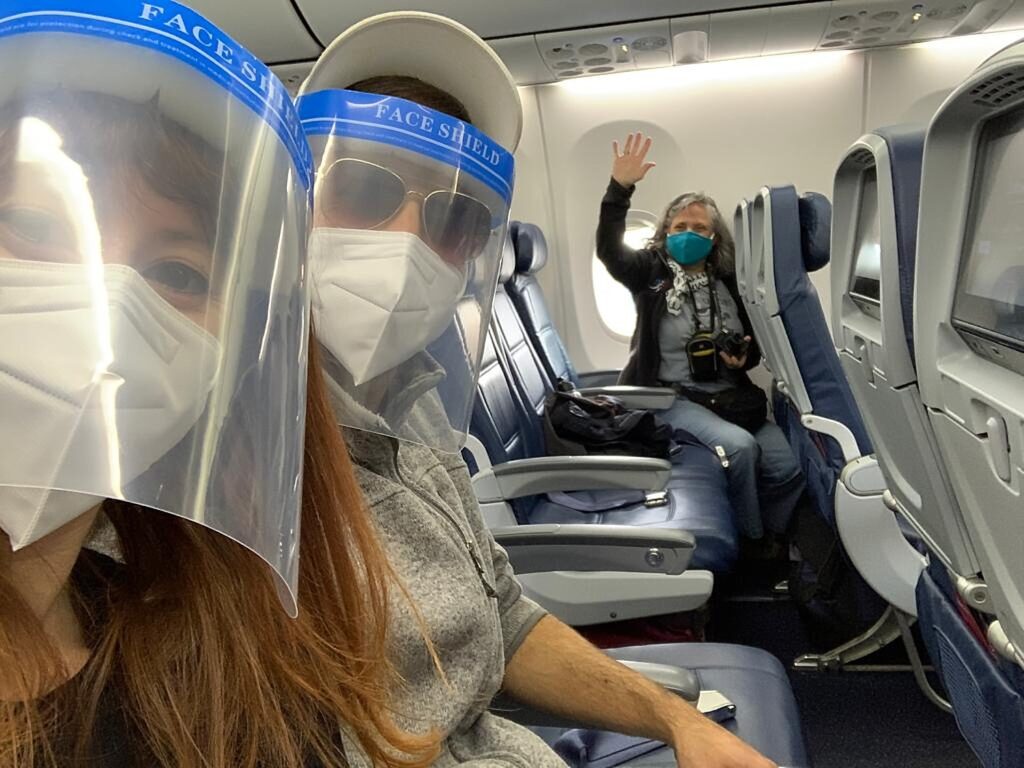
by Karen Rubin, Dave E. Leiberman & Laini Miranda
Travel Features Syndicate, goingplacesfarandnear.com
Who would imagine that going to airport would be adventure requiring intense planning beyond packing to fit a carry-on? – the decision of which airlines keep the middle seat empty and have a high rating in COVID-19 procedures, routing (direct, or what airport and for how long to lay over?) self-driving and long-term parking over Uber or taxi service?; masks, face shields, wipes, sanitizer, food and a water bottle (refilled after going through security) so you don’t have to buy at the airport.
With all these considerations in mind for a trip to San Francisco (a calculation in itself, taking into consideration infection rates at the destination, the confidence that California, hit early and hard by the coronavirus, is taking COVID-19 mitigation seriously, and seeing the timing, in October, as a window-of-opportunity before a likely lockdown in fall and winter as infection rates re-surge), we decided to fly out of Albany airport (small compared to flying out of JFK) on Delta, which scored extremely high marks for its new COVID-19 safety standards and policies.
It also afforded us the ability to drive our car, park in the long-term lot just a few minutes walk to the terminal and avoid any car service or shuttle bus.
After reading what the airlines are doing to keep passengers safe – including HEPA filtration and ventilation systems on par with hospitals (health tip: this means you need to drink plenty of water to stay hydrated and avoid getting headache or nauseous) – I was more concerned about going through the airport itself and security.
The choice to fly Delta from Albany (versus JetBlue out of JFK) meant a layover at Detroit, a city and state that has seen a surge of infections. I actually called to find out if there were numbers of cases traced back to the airport (I was told to check the CDC). I was told the airport takes every precaution with its workers.
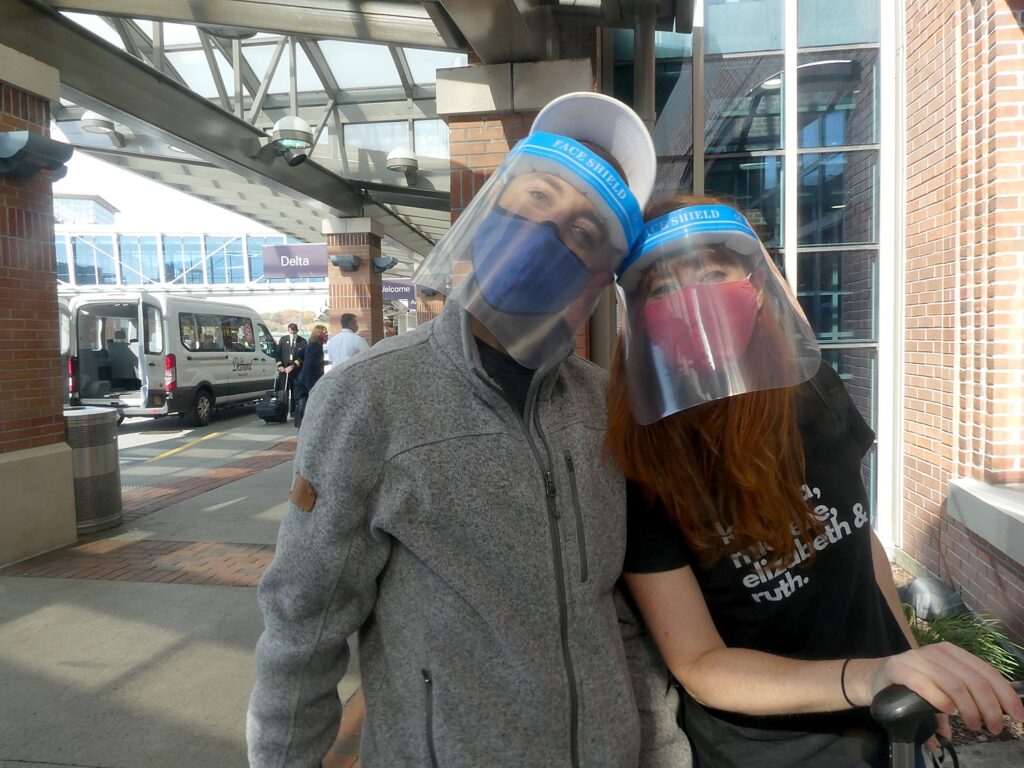
We arrive at Albany Airport in plenty of time for our 12:50 pm flight. There is hardly anyone around. We wait outside for David to park the car. Inside, there are sanitizing stations everywhere. The restrooms are extremely clean. There is hardly anyone going through security so we breeze through, following the marked-off places on the floor. All the airport and TSA personnel are wearing masks and gloves and most are behind plexiglass shields. We drop our mask just long enough for the TSA agent to check face to photo.
We get our seats at the gate – people are sitting one to a row on this small (2×2 seating) aircraft to Detroit; the flight from Detroit to San Francisco is 3 x 3, with the middle seat kept empty.
As we enter the plane, we are handed a sanitizer packet.
The new safety speech (fasten your seatbelt, your life preserver is under your seat, in the event of loss of pressure, a mask…) now features new safety protocol, delivered with cheery smiles which, like the traditional safety speech, makes it all routine and not alarming at all. “Wear your face mask over nose and mouth… underneath these masks, we assure you we are still smiling.”
We are told about the “new standard of health and cleanliness” – high grade ventilation, hospital-grade filter, all surfaces sanitized prior to each flight.
During the flight, just 1 hour, 19 minutes to Detroit, the flight attendants in masks and gloves come by with a plastic bag filled with packaged snacks (biscotti, cheese bits, bottle of water) and a Purell packet and a notice about supporting one of Delta’s sponsored charities, for breast cancer (on the next flight, the safety video features a split screen showcasing Delta’s support of Habitat for Humanity, done extremely well). “We are excited to see the world together again,” it ends.
We aren’t restricted in terms of going to the restroom and there never is a line.
Deplaning isn’t a wild scramble either. We are told to wait until the passengers in front have taken their items and moved out (I would suggest they unload from the front and middle, so two sets of passengers can leave at the same time, and to let the people making connecting flights leave first) to preserve social distancing.
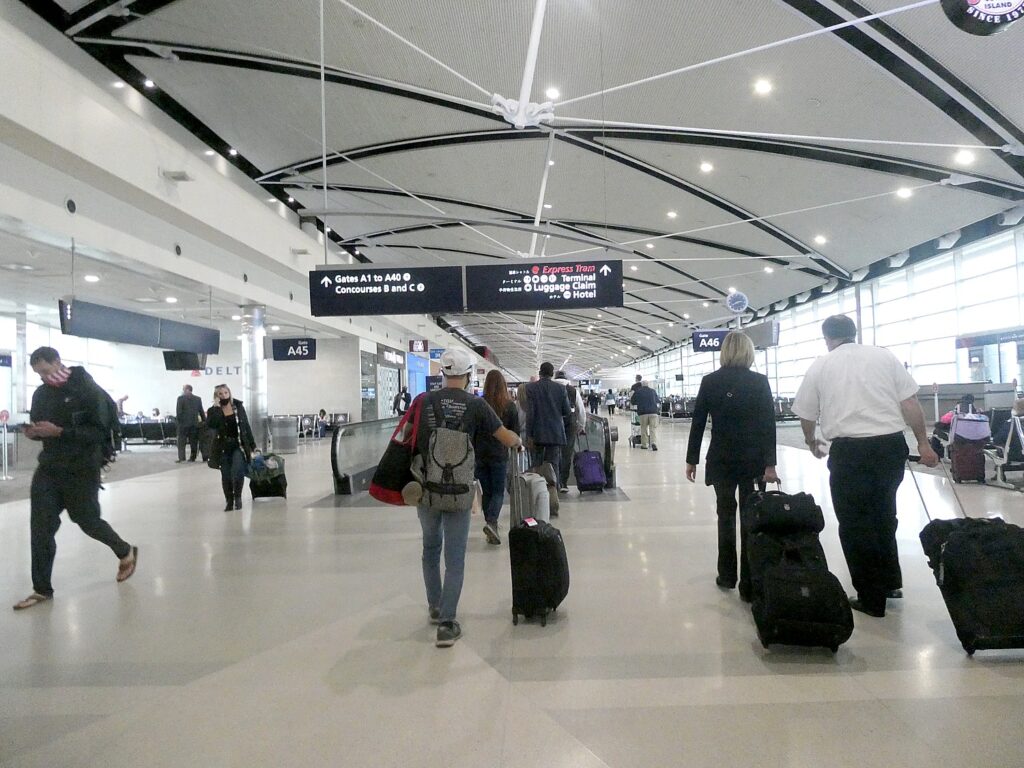
At Detroit Metropolitan Wayne County Airport, a major hub airport there are a surprising number of people (at least compared to Albany) but not nearly the crowds of normal times (DTW handled 36 million passengers in 2019, 1,100 flights a day to and from 140 destinations on four continents). Indeed, there is a sense of “new normal,” a new routine.
Everyone is wearing masks; seats at the gates are marked off for social distancing, food services take orders and hand them out by number. In fact, while airports in these days of mass travel, are typically hectic, frenetic, frantic places, it feels amazingly calm, refined, a throwback to the old days when air travel was special. And the attitude of the airport and airline personnel is calmer, welcoming, even appreciative of having passengers.
The Delta agent at the gate at Detroit who gives us our seat assignments to San Francisco says that they get as many free COVID tests as they need, and if they aren’t feeling well, if they have a cough, they are told to stay home.
On board, we are handed a packet of sanitizer as we enter and seated spaced apart, and I could feel the enhanced ventilation (tip: drink plenty of water because you feel your essence sucked out of you). We used the sanitizing cloth over the chair, hand rests, monitor, tray, headrest (for our own peace of mind).
On this flight, about 5 hours (two movies worth!) we are again handed a plastic bag with snacks and Purell.
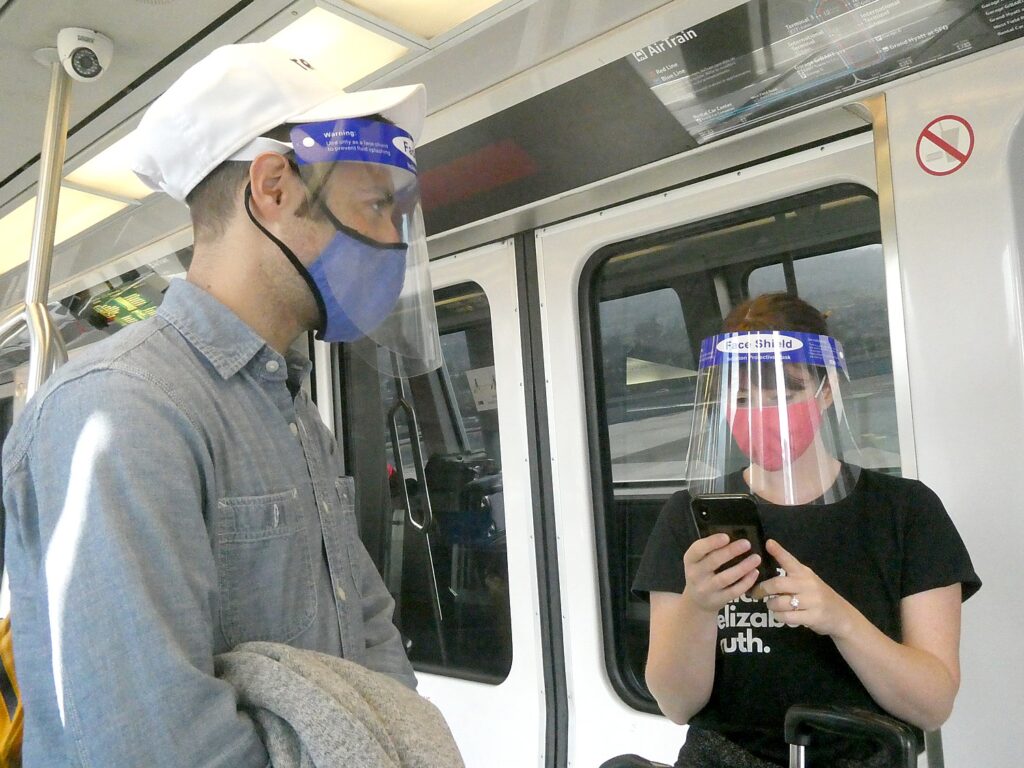
Delta has taken major steps (some you may not even realize) – in fact, more than 100 measures – to keep passengers safe and equally as importantly, give passengers confidence to fly, which it calls the Delta CareStandard intended to provide layers of protection (see: (see: https://news.delta.com/delta-keeping-you-safe-blocked-middle-seats-hospital-grade-air-filters-and-more):
In the airport: There is touchless check-in(download the Fly Delta app to access a digital boarding pass); check-in lobbies, self-service kiosks, gate counters and baggage claim are thoroughly wiped down during the day. Electrostatic cleaning, used on the aircraft, is also deployed in key airport locations. There are plexiglass shields at check in counters, Delta Sky Clubs and gate counters across the globe; social distancing markers at check-in, jet bridges; hand sanitizer stations are ubiquitous.
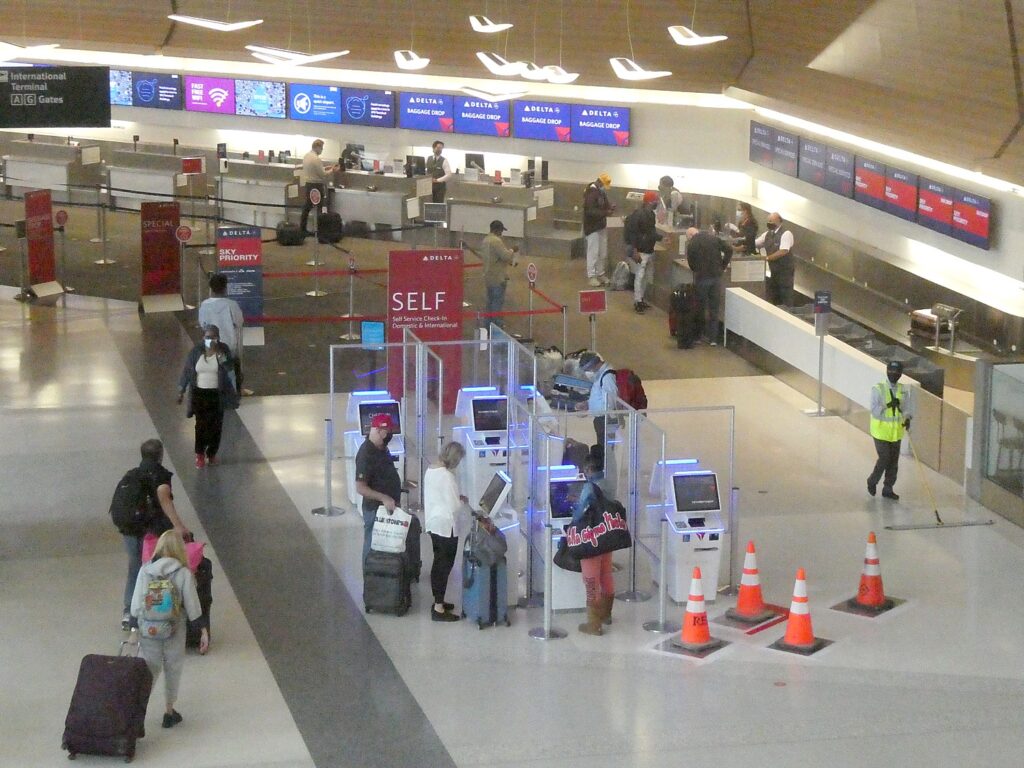
In partnership with the Transportation Security Administration, Delta is rolling out antimicrobial bins that prevent the growth of a broad spectrum of bacteria to automated screening lanes in Atlanta, Minneapolis/St. Paul, Los Angeles, New York-LaGuardia and New York-JFK, with other markets coming online.
Customer care kits may be obtained at Delta ticket counters and gates with sanitzer wipe, mask and informational card.
Air filtering systems that pump outside air into jetbridges and parked aircraft are being replaced with LEED Platinum MERV14 filters.
Onboard experience: Delta was the first US airline where customers can find hand sanitzer stations near boarding door and bathrooms on every aircraft. The boarding process is adjusted to encourage more space – boarding all flights from back to front so dcustomers shouldn’t need to pass one another, and limiting boarding groups to 10 or fewer.
Through at least Jan. 6, 2021, Delta is blocking the selection of middle seats and limiting the number of customers preflight.
In order to accommodate extra spacing, Delta may put higher-capacity aircraft or add flights on routes where there is increased demand .
Every flight is thoroughly sanitized prior to boarding using electrostatic sprayers, then cleaning crews use high-grade disinfectant to wipe down personal and common areas of the cabin. “If an aircraft doesn’t pass our spot check before you board, our teams are encouraged to hold the flight and call back the cleaning crew.”
The air on all aircraft is completely recirculated 10 to 30 times per hour with fresh, outside air through industrial-grade HEPA filters, which extract more than 99.99% of particles, including viruses.
The airline is installing Vyv antimicrobial LED lighting above high-touch sinks and countertops in lavatories on select aircraft to continually reduce the growth of bacteria – one of many clean innovations that Delta is bringing onboard.
“The (travel) experience is a very comfortable, a very safe experience, we have taken actions, even above and beyond what the CDC has recommended to ensure safety,” Delta’s Chief Customer Experience Officer Bill Lentsch told ABC News.
Delta has formed a new Global Cleanliness Division which is working with teams across the airline and partners like Mayo Clinic and RB (makers of Lysol).
In a similar vein, United Airlines assures its passengers, “We know travel looks a little different these days, but rest assured that we’re here for you every step of the way. Throughout your journey, we’re putting safety and cleanliness at the forefront of your travel experience through our United CleanPlus℠ program and by teaming up with Clorox. We’re also working closely with the experts at Cleveland Clinic to advise us on enhancing safety measures.”
Actually, it is remarkable how “normal” these new procedures seem.
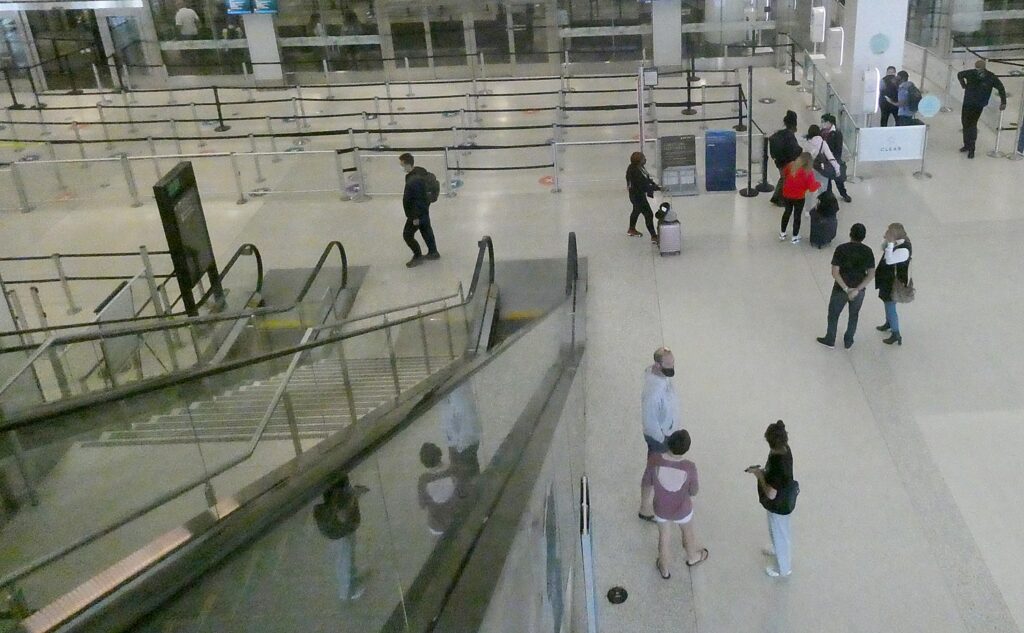
Indeed, according to a Pentagon study, since airlines began putting these measures in place in spring 2020, “there has been little evidence to date of onboard disease transmission,” according to researchers at Harvard T.H. Chan School of Public Health. Their report notes that when the “highly effective” ventilation systems are running from boarding until deplaning the risk of exposure falls below that of activities like grocery shopping and dining out.
As reported by Ellen Mitchell in The Hill, the risk of contracting an airborne virus such as COVID-19 is very low when traveling aboard a large commercial aircraft when most people are wearing masks, the Defense Department-led study concluded.
The study found that due to air particle filtration and ventilation systems, 99.99 percent of particles released into the air from an infected person wearing a mask were removed from the aircraft cabin within six minutes of being released.
Even if someone were sitting directly next to an infected passenger, 99.7 percent of the virus particles around them would be removed in that timeframe, the study found. That’s roughly 15 times faster than the particles would take to dissipate in an average home and five to six times faster than in a modern hospital, Mitchell reported.
The study concluded that it was “extremely unlikely” passengers would be exposed to an infectious dose of COVID-19 while on a 12-hour flight. (See: thehill.com/policy/defense/521303-pentagon-study-low-risk-of-contracting-covid-19-on-planes-with-passengers)
_____________________________
© 2020 Travel Features Syndicate, a division of Workstyles, Inc. All rights reserved. Visit goingplacesfarandnear.com, www.huffingtonpost.com/author/karen-rubin, and travelwritersmagazine.com/TravelFeaturesSyndicate/. Blogging at goingplacesnearandfar.wordpress.com and moralcompasstravel.info. Send comments or questions to [email protected]. Tweet @TravelFeatures. ‘Like’ us at facebook.com/NewsPhotoFeatures
